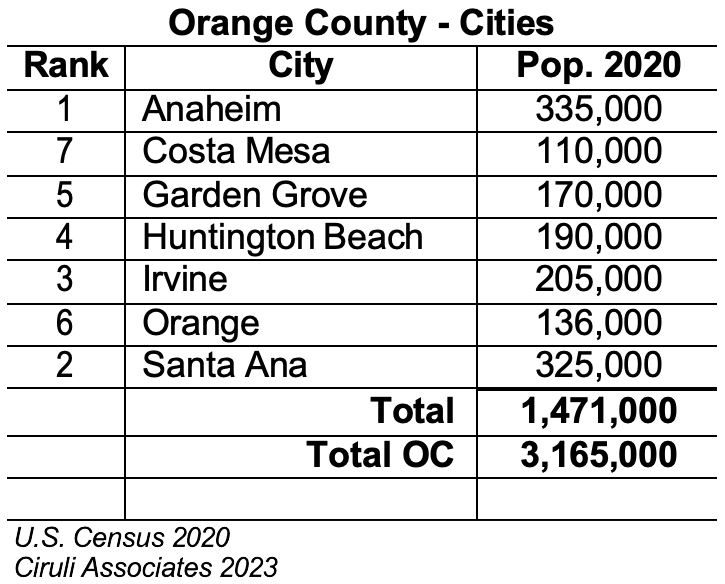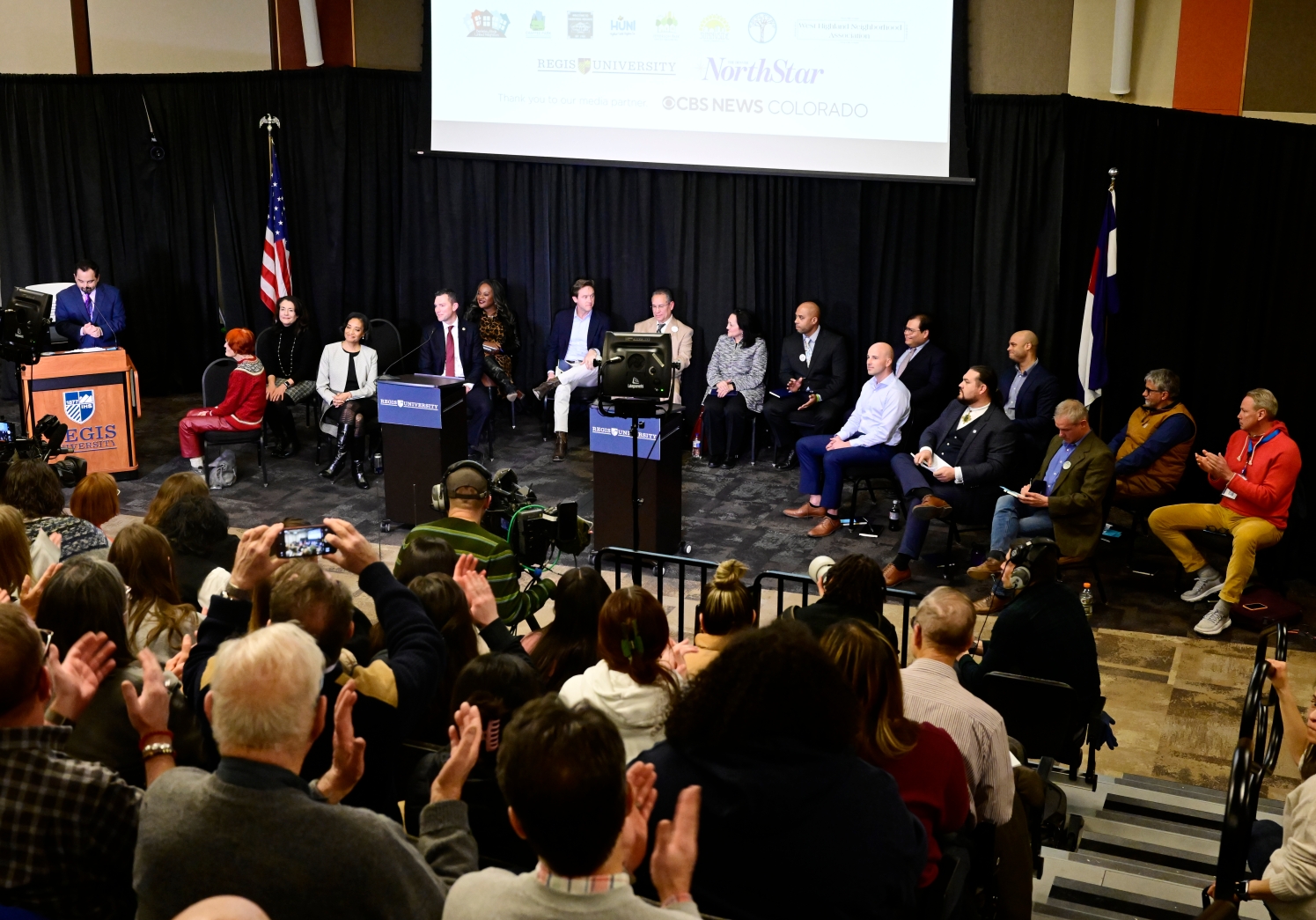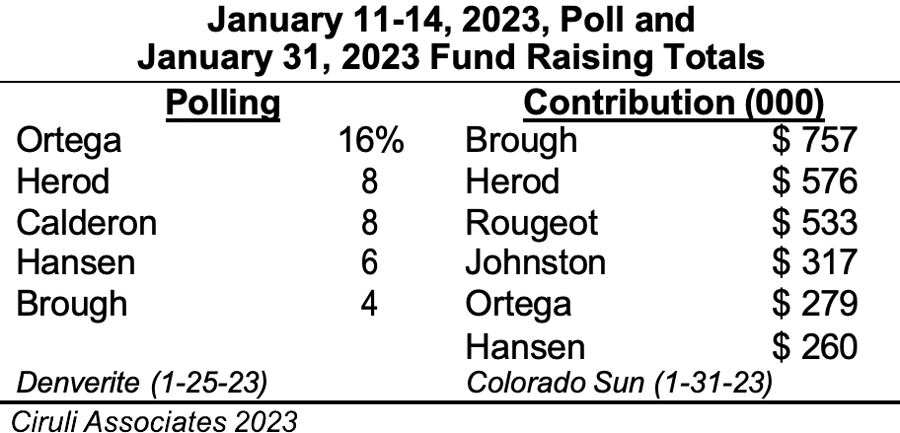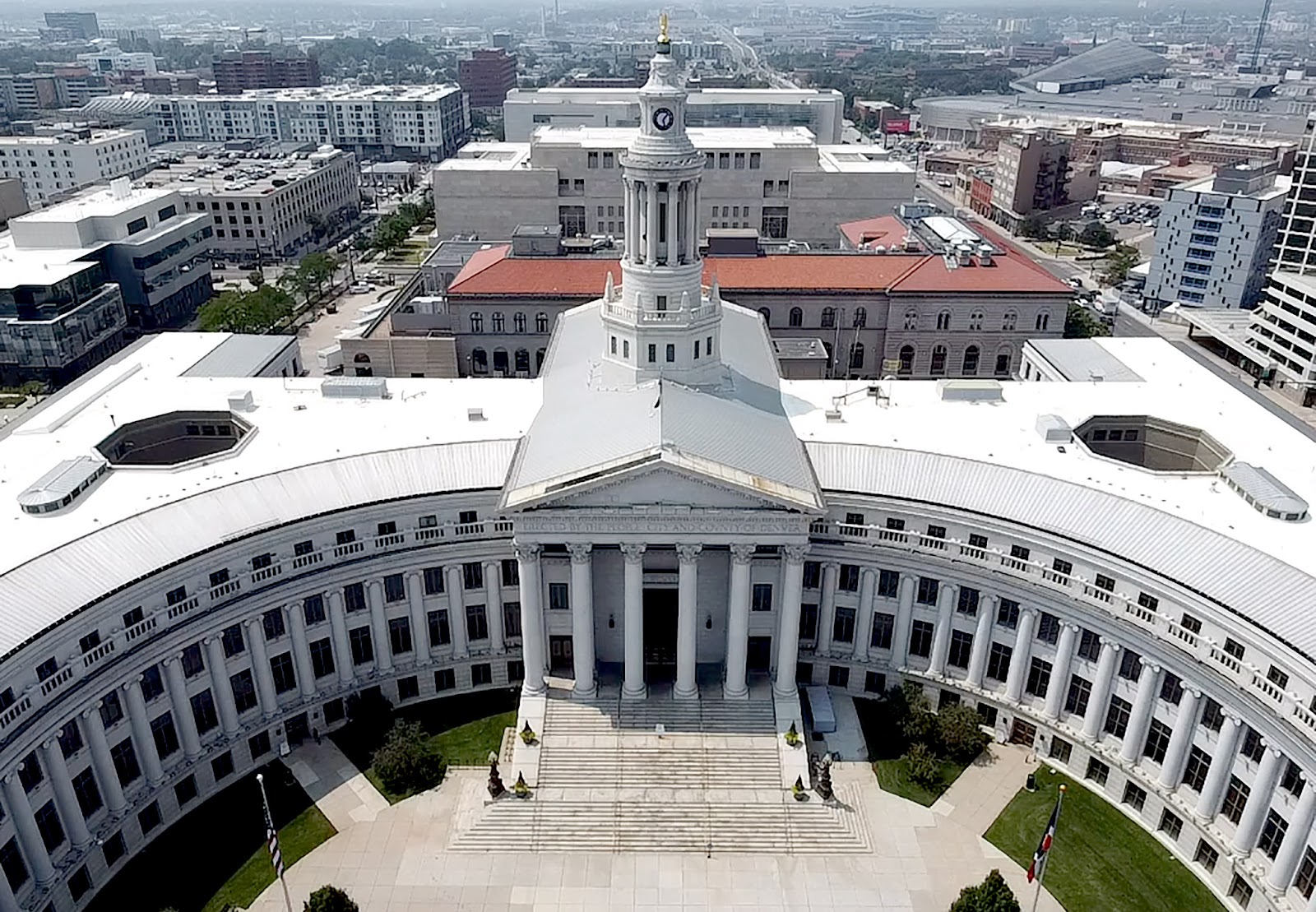 First debate in race for Denver mayor: Candidates give their views on affordability and the cost of living in Denver
Photo: 9news.com
First debate in race for Denver mayor: Candidates give their views on affordability and the cost of living in Denver
Photo: 9news.com
With only three weeks until ballots go out, 59 percent of Denver voters have little idea as to who they will vote for on April 4th, election day. Kelly Brough appears to be the front runner (8%) in a field of candidates few know. Her lead is less than the margin of error over second place Leslie Herod (6%).
Brough is the last name on the ballot, but first in fundraising. The March financial reports will likely show her in an ever more substantial lead. Expect media advertising to begin shortly.
The poll was sponsored by a business political committee, no doubt concerned that voters are not yet engaged.





















